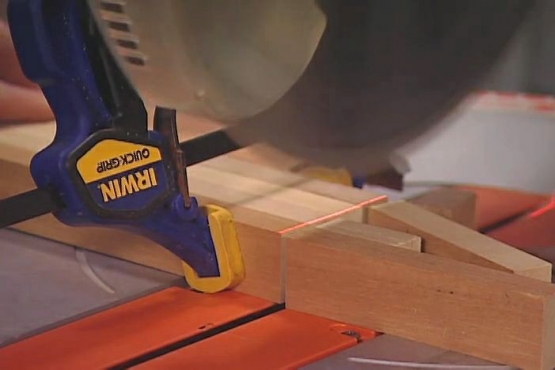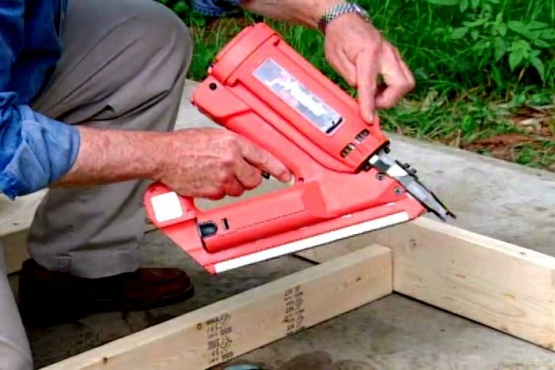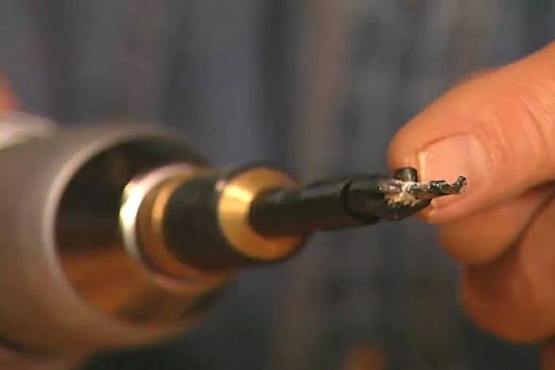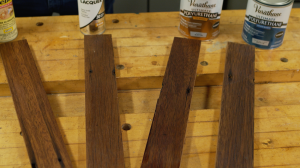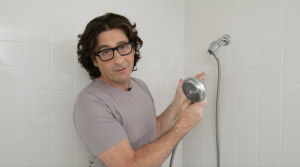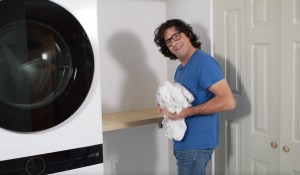RH: Today’s first house call takes me to the hillside community of Pacific Palisades. Located between the cities of Malibu to the North and Santa Monica to the South, Pacific Palisades is named after it’s high bluffs or palisades that run three miles along the Southern California coastline. It’s also home to Doris Shaulk who lives right next door to her son Larry. Now, Doris’ deck offers a breathtaking view of the Santa Monica Bay. There’s just one drawback. It can get very windy up here. So, today, we’re going to build Doris a windbreak. Hey Doris!
DS: Hi Ron!
RH: I was so anxious to get here I almost jumped off of those steps.
DS: Oh wow!
LS: Good Morning!
RH: How are you?
LS: Good to see you. Let’s take you over to my mother’s place.
RH: Okay, sounds great to me. You know, this is what California is all about isn’t it?
DS: That’s right.
RH: Palm trees, volleyball courts, the ocean. My gosh! You’re going to be spending a lot of time out here?
DS: Oh, yes. Yes. I spend most of my time outdoors either gardening or just sitting here looking at the ocean.
RH: So, we want something that will keep the wind off you but obviously not obstruct . . .
DS: Not obstruct, right.
RH: . . . any of this gorgeous view here. All right. I’ve got a couple things in mind. Let’s do a sketch. Kind of show you what I’m thinking about. Check to be sure that this is strong.
DS: All right.
RH: Then we’ll go to work.
DS: Okay.
LS: Great!
RH: Doris’ windbreak will consist of five identical frames crafted from 2 x 2 redwood lumbar. Secured inside each frame will be a sheet of hardened clear plastic which is scratch resistant and lighter and safer than glass. To accommodate the plastic we’re going to cut a groove, known as a Dado, down the center of each side of the frame. The first thing we’re going to do is cut out the top, bottom and sides of the frame. I’m going to cut . . . I’ll cut them a little bit longer than we actually need and trim them back a little later on. We set the stop block on our power miter saw to the lengths we’ll need, place the ends of the lumbar against the stop and begin making our cuts. Using the saw’s work stop Doris and Larry cut enough wood for all the frames in a matter of minutes. Next step is I want to take . . . we’re going to take these and we’re going to cut that groove right down the center here. For that we’re going to need our table saw. Now, I’ve got the saw all set up to make this Dado groove right here. In fact this was a test cut. It’s working fine. Let me just show you what I did here. This wide blade called a Dado blade will allow us to cut the groove in one pass. I’ve also added these attachments to the saw, called feathers. The top yellow feather presses the wood firmly down onto the table while the wooden one on the side keeps the lumbar against the saw fins. The feathers ensure that the groove will be a consistent depth and centered in each piece of wood as it runs over the Dado blade which is actually two special blades side by side. Before long Doris and Larry have put Dado cuts in all the wood required for the five frames. Now it’s time to make miter cuts at the ends of each piece. Now, what I’d like to do and Larry you could do this if you would, is to cut an angle on the end here. Like here. In fact it’s going to look just like this. Okay. So, we’ll cut an angle on each end and the idea is that then these pieces of the frame will fit together and give us nice finished corners like that. We set the blade on the saw to cut at a 45 degree angle on both ends of each frame section. Larry and Doris are a picture of team work. Isn’t that gorgeous?
DS: Beautiful.
RH: Do you appreciate that like I can?
DS: Yes.
RH: With the frame pieces cut out it’s time to measure and cut the clear plastic that will fit inside. For this we switch to a cordless circular saw. I’ve set the blade so that it’s just barely coming through the bottom of the plate here.
LS: Yeah.
RH: Less than a ¼ of an inch because there’s some plywood underneath. So, go ahead. Just keep it up against the straight edge here and . . .
LS: All right.
RH: The acrylic plastic is coated with a clear plastic film that we’ll leave in place for now. It will protect the surface from scratches as Larry makes his cuts. That looks like it’s through. Our next step is to assemble the frames around the plastic panels. What I want to do now is put some silicone in these grooves that we cut earlier. The silicone will bond the insides of the frame to the edge of the plastic. Making the entire unit stronger and keeping the panes from rattling when the wind hits them. Next we brush polyester glue onto the miters cut on each end of the frame sections. Not too much, this glue actually expands as it dries. It’ll kind of bubble out of the joint. So, that’s just about right.
LS: Are you able to clean this brush after using this glue?
RH: Never. Cannot clean your brush, your hands or your clothes.
LS: All right.
RH: It’s great glue. And it’s fast drying too. We have just about 15 minutes to put our assembly together. First we peel off about an inch of the protective film around the edge of the plastic, just enough to allow the plastic to fit inside the frame. Lay the plastic, kind of right on the wood and then just roll this up, like this, and in.
LS: Yes.
RH: With all four frame sides in place it’s time to attach them together. We use a right angle frame clamp to hold the corners in position. Then Larry drills clearance holes at the corners and inserts rust resistant screws. The screws hold the corners together allowing the clamps to be removed. Now, we’ve temporarily clamped this piece of 1 x 4 on here. It’s actually going to serve as a ledger with these two clamps. That’s going to support the bottom of these panels which we’ve made up. It’s just a little bit easier installation because we won’t have to hold them up in place. We won’t be fighting gravity so that sits right on the bottom like that. I drill a clearance hole through the frame and inject silicone to prevent water from entering and rotting the wood from the inside out. Then we secure the frame directly to the railing with stainless steel screws and finishing washers. Next Larry and I move on to the remaining panels. We leave a two inch gap between each frame to allow the wind to blow through preventing the assembly from turning into a giant sail. Finally Doris and Larry are ready for the unveiling. All right you guys, come on in. Time for the unveiling.
LS: All right.
DS: Oh, wow!
RH: Grab a corner up there.
LS: Okay.
DS: Okay.
RH: On one, two, three. There you go, huh?
DS: Oh! That’s great!
RH: Boy! Look at that! None to soon. Well, I don’t know if there’s that much wind coming but I think there’s definitely a rain storm coming. As storm clouds roll over the ocean, Doris’ new windbreak might get Christened sooner then we expected. It can’t stop the rain from falling but I’m confident that it will prevent gusty winds from keeping Doris indoors and allow her to enjoy this little piece of Pacific paradise.
